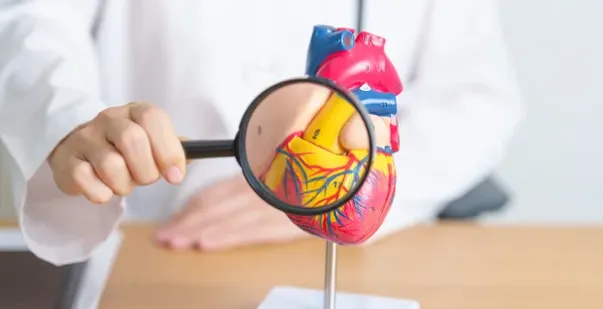Table of Contents:
- Introduction
- What Is Ejection Fraction?
- Why Ejection Fraction Matters
- How Ejection Fraction Is Measured
- What Do Different Ejection Fraction Levels Mean?
- What Causes Low Ejection Fraction?
- Ejection Fraction and Your Heart Health
The heart is a powerful organ that pumps blood throughout the body, providing oxygen and nutrients to every part of us. But how well it performs this job can vary from person to person. The ejection fraction (EF) tells us how much blood your heart pumps out each time it beats. In this blog, we’ll break down what ejection fraction is and how it relates to heart function.
Master ACLS Now
Get ACLS certified with confidence
What Is Ejection Fraction?
EF refers to the percentage of blood that the left ventricle (the heart’s main pumping chamber) pumps out with each beat. The left ventricle pumps oxygen-rich blood to the rest of the body. While the heart doesn’t pump out all the blood inside the ventricle with each beat, it pumps out a significant portion. The percentage of blood pumped out is called the ejection fraction.
For example, if the left ventricle holds 100 milliliters of blood and pumps out 60 milliliters with each beat, the ejection fraction would be 60%. A normal ejection fraction typically falls between 50% and 70%. Sometimes, issues like anterior wall hypokinesis can affect how the heart pumps. What is hypokinesis of the anterior wall? It refers to the weakened movement of the front part of the heart, which may reduce the heart’s pumping efficiency.
Why Ejection Fraction Matters
Ejection fraction helps doctors determine if the heart is functioning properly. If the EF is too low, it can indicate that the heart is not pumping enough blood to meet the body’s needs, which may lead to symptoms like fatigue, shortness of breath, and swelling in the legs and feet—all signs of heart failure. Conversely, if the EF is too high, it could suggest other issues, such as hypertrophic cardiomyopathy (a thickening of the heart muscle).
Read More: An Ultimate Guide to Cardiac Conduction System
How Ejection Fraction Is Measured
Doctors measure ejection fraction in several ways, one of the most common being an echocardiogram. This ultrasound uses sound waves to create images of the heart, allowing doctors to see how well the heart’s chambers are working and how much blood is being pumped with each beat.
Other tests that can measure ejection fraction include:
Magnetic Resonance Imaging (MRI)
Magnetic Resonance Imaging (MRI) uses powerful magnets and radio waves to create highly detailed images of the heart. This non-invasive test is valuable for accurately measuring the ejection fraction, which indicates how well the heart is pumping blood. MRI scans offer a clear view of the heart’s chambers, valves, and surrounding structures, making it easier to detect any abnormalities or damage. Since there is no exposure to radiation, MRI is often preferred for patients needing multiple scans over time.
Cardiac Catheterization
Cardiac catheterization is a more invasive procedure where a thin tube, or catheter, is inserted into the heart through a blood vessel. A special dye is injected through the catheter to allow doctors to see the heart’s structure and function in great detail. This test provides precise measurements of the heart’s performance, including ejection fraction. It’s often used when other tests don’t give enough information or when a more direct examination is needed to assess heart health.
Nuclear Stress Test
A nuclear stress test involves injecting a small amount of radioactive material into the bloodstream, followed by taking images of the heart using a special camera. This test helps evaluate how well blood is flowing to the heart and can measure the ejection fraction. The test is typically done while the patient is at rest and during exercise to assess how the heart functions under different levels of stress.
Computed Tomography (CT) Scan
A computed tomography (CT) scan gives us cross-sectional images of the heart. It will thus give us an idea about it structure and function. It captures images that help us evaluate how well the heart is pumping. Although CT scans do involve exposure to some radiation, the level is generally considered safe, especially when weighed against the benefits of early detection and accurate diagnosis.
What Do Different Ejection Fraction Levels Mean?
Ejection fraction is a measure of how well your heart pumps blood. Different EF levels can give clues about the heart’s health and function. Below are the various EF ranges.
Normal Ejection Fraction (50%-70%)
A normal ejection fraction means your heart is functioning well and pumping blood efficiently. This range indicates that your heart is strong enough to meet the body’s needs. Most people with a normal EF have a healthy heart, and there are usually no major concerns about heart function. This is the ideal range doctors aim for when assessing heart health.
Borderline Ejection Fraction (41%-49%)
A borderline ejection fraction suggests that the heart isn’t pumping as strongly as it should. While not in the necessary range, it could indicate early signs of heart muscle damage or weakening. People in this range might experience mild symptoms like fatigue or shortness of breath, and doctors may recommend monitoring or lifestyle changes to prevent further decline.
Reduced Ejection Fraction (Below 40%)
A reduced ejection fraction signals that the heart is struggling to pump enough blood to meet the body’s needs. This is often linked to heart failure, where the heart can’t pump blood effectively. People with low EF may need medications, lifestyle changes, or even more advanced treatments to help improve heart function and manage symptoms like swelling and breathlessness.
High Ejection Fraction (Over 70%)
While a high ejection fraction might sound good, it can indicate an underlying issue. It may point to hypertrophic cardiomyopathy, a condition where the heart muscle is thickened and works harder to pump blood. Although the heart is pumping a large percentage of blood, this excessive effort can lead to other heart problems over time, such as arrhythmias or heart failure.
What Causes Low Ejection Fraction?
There are several factors that can contribute to a low ejection fraction. Different areas of the heart can have weakened movement, and these can thus lead to lower ejection fraction. Some common causes include:
Anterior Wall Hypokinesis
Anterior hypokinesis refers to weakened movement in the front part of the heart, specifically in the left ventricle. This area of the heart pumps blood to the rest of the body. When this region moves less efficiently, it can lead to a reduced ejection fraction, meaning the heart can’t pump out as much blood as needed. This condition may be caused by blockages in the arteries that supply blood to the heart, especially after a heart attack.
Inferior Wall Hypokinesis
Inferior wall hypokinesis affects the bottom part of the heart, which also plays a role in pumping blood. When the movement in this region is weakened, it can make the heart less effective overall. This condition often results from reduced blood flow to the heart muscle, particularly due to coronary artery disease or a past heart block.
Inferolateral Hypokinesis
Inferolateral hypokinesis means the lower and side areas of the heart are not moving as strongly as they should. This can happen when there is damage to the heart muscle, often due to blocked arteries or heart disease. Reduced movement in these areas affects how well the heart pumps blood, leading to symptoms like fatigue or shortness of breath.
Septal Hypokinesis
Septal hypokinesis refers to weakened movement in the septum, the wall that separates the heart’s right and left sides. The septum plays a role in coordinating the heart’s contractions. When the septum doesn’t move properly, it can reduce the heart’s overall pumping ability, which may lower the ejection fraction and contribute to heart failure symptoms.
Mild Diffuse Hypokinesis
Mild diffuse hypokinesis affects the entire heart muscle, but only slightly. This means the heart’s movement is generally weaker, though not severely in any specific area. While mild, this condition can still reduce the heart’s pumping efficiency, leading to lower blood output and possibly causing early signs of heart failure.
Global Hypokinesis
Global hypokinesis of the heart means that the entire heart muscle is weakened, not just one section. This can happen when the heart is damaged from long-term conditions like high blood pressure, cardiomyopathy, or heart attacks. Global hypokinesis results in a very low ejection fraction, which significantly impairs the heart’s ability to pump enough blood to meet the body’s needs.
Read More: Post-cardiac Arrest Care (ACLS)
Ejection Fraction and Your Heart Health
The ejection fraction measures how well your heart is pumping blood. If you have a low ejection fraction, you need to work with your doctor to find the right treatment plan. Bringing changes in your lifestyle and medications can help improve your heart health. Take your healthcare knowledge to the next level by getting ACLS certified. Enroll in an ACLS course today and gain the skills to handle cardiac emergencies with confidence!
References:
- https://my.clevelandclinic.org/health/articles/16950-ejection-fraction
- https://www.pennmedicine.org/updates/blogs/heart-and-vascular-blog/2022/april/ejection-fraction-what-the-numbers-mean
- https://www.webmd.com/heart-disease/heart-failure/features/ejection-fraction
- https://www.mayoclinic.org/tests-procedures/ekg/expert-answers/ejection-fraction/faq-20058286#:~:text=Ejection%20fraction%20is%20a%20measurement,see%20how%20your%20heart%20works.







